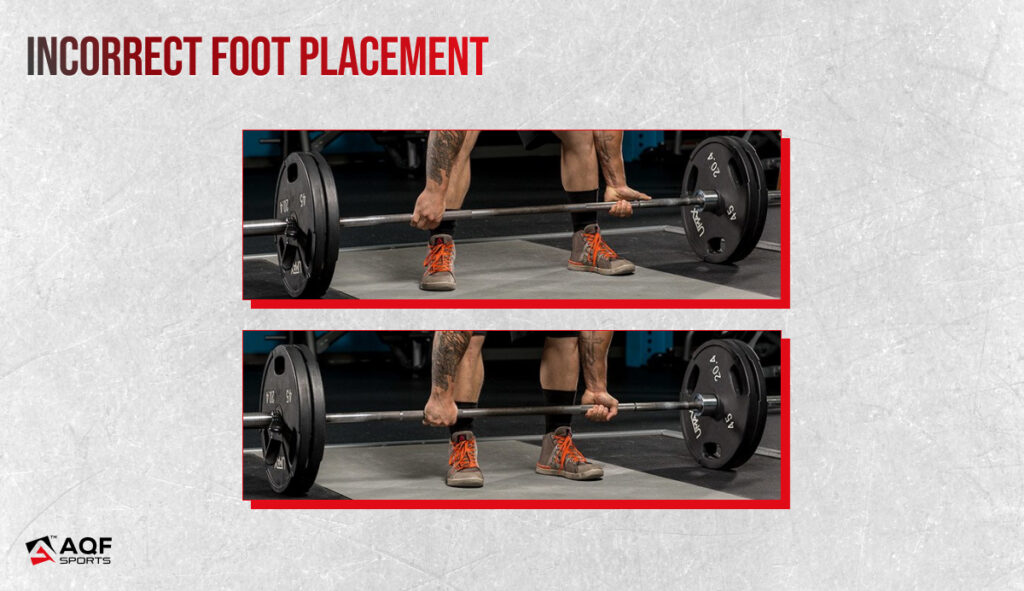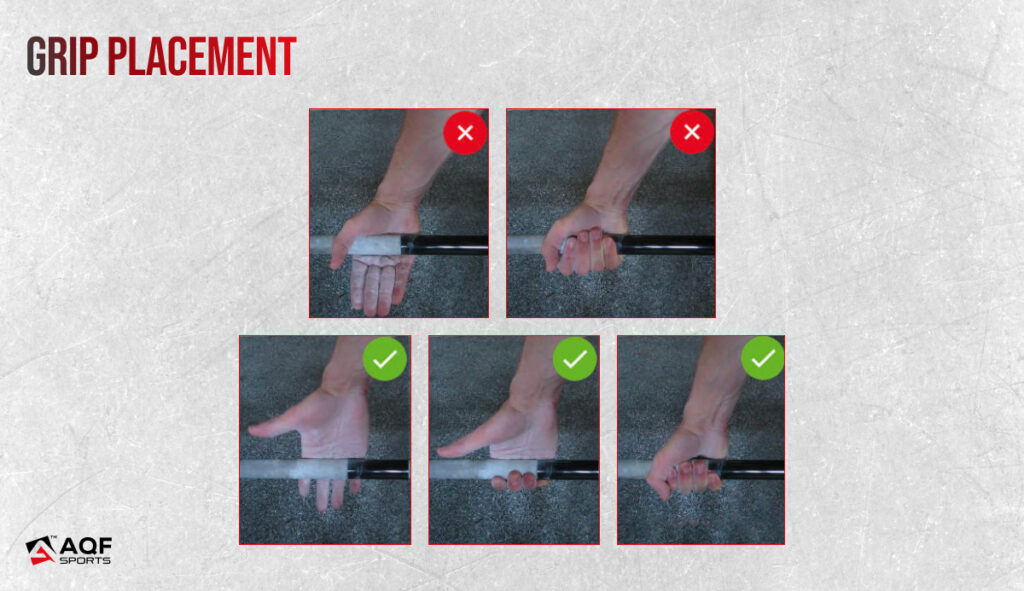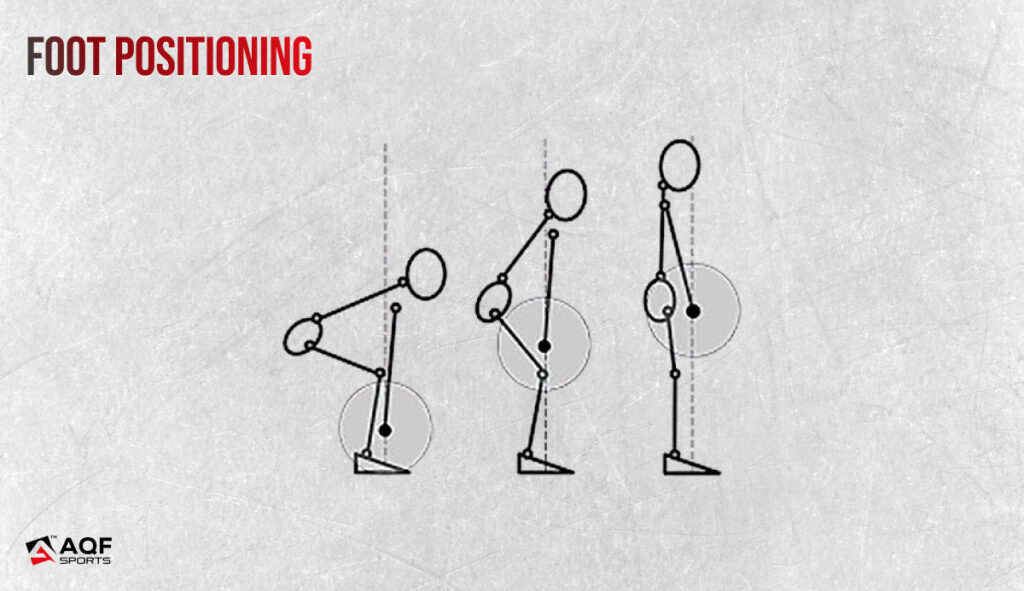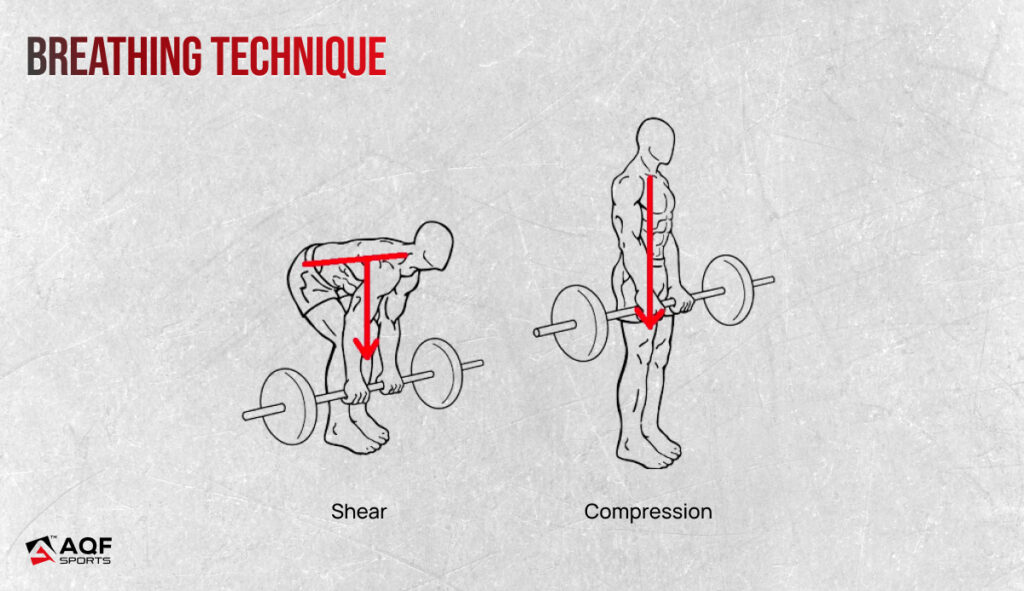Common Deadlift Errors and How to Avoid Them?

Deadlifting is quite a challenge for beginners. Most strength trainers make common deadlift errors during the beginning due to several reasons. Deadlifting involves a specific technique. It’s a full-body movement that requires coordination between multiple muscle groups, from your legs and back to your core. Working all these parts together smoothly takes time and practice.
Deadlift requires proper form. You’ve got to keep your back straight, engage your core, hinge at your hips just right, and lift the weight using your legs and hips instead of your back. Often, beginners might have strength imbalances or weaknesses in certain muscles involved in the deadlift, like the hamstrings, glutes, or lower back.
Because deadlifting involves lifting a heavy weight from the ground, beginners might worry about hurting their back. This fear can make them overly cautious or hesitant, affecting their form and confidence.
Deadlifts are a brand-new exercise for many beginners. Like any new skill, it takes time to get the hang of it. Without prior experience, it’s natural to feel unsure or struggle with the mechanics at the beginning.
Sometimes, limited mobility in areas like the hips, hamstrings, or ankles can affect how well you can perform a deadlift. These limitations might need addressing to perform the movement optimally.
Common Deadlift Errors
The deadlift is an incredible compound exercise, but a few mistakes can hinder progress or even lead to injury. These mistakes can happen due to various reasons like lack of proper guidance or knowledge, attempting to lift heavier weights prematurely, inadequate flexibility or mobility, or simply a lack of focus on form.
Here are some common ones and why they happen:
Rounding the Back:
This mistake occurs when the back isn’t kept straight during the lift. It often results from poor form, lack of core strength, or attempting to lift too heavy too soon. Rounding the back increases the risk of spinal injury.

Incorrect Foot Placement:
You might be placing the feet too wide or too narrow which can affect balance and power during the lift. It might be due to a lack of understanding of proper stance or mobility limitations.

Improper Hip Positioning:
Not engaging the hips properly by either starting with the hips too high or too low can reduce the effectiveness of the lift and place unnecessary strain on the lower back.
Suggested Read: Should You Wear Wrist Straps for Deadlifting?
Using Too Much Weight:
Trying to lift more weight than the body can handle is a common mistake, leading to compromised form and potential injury. Often, it stems from ego or a desire to progress too quickly without mastering the correct technique.
Suggested Read: Do Weightlifting Belts Prevent Injuries?
Neglecting Warm-up:
Skipping warm-up sets or not adequately preparing the body for the lift increases the risk of muscle strains or injury.
Pulling with Arms:
Using the arms excessively instead of relying on the legs and core for power is another error. This can strain the arms and lead to diminished gains in the targeted muscle groups.
Tip: Wear a weightlifting belt to avoid injuries.

Breathing Improperly:
Many people overlook the importance of breathing during a deadlift. Holding the breath or not coordinating proper breathing technique (such as inhaling before the lift and exhaling at the top) can lead to reduced intra-abdominal pressure and compromise stability during the lift.
Grip Placement:
Incorrect grip placement on the bar, such as gripping it too wide or too narrow, can affect leverage and compromise strength. This mistake often occurs due to a lack of awareness or understanding of the optimal grip width that suits one’s body proportions and comfort.

Overextending at the Top:
Hyperextending or leaning too far back at the top of the lift can strain the lower back. It might happen due to the misconception that achieving a more pronounced lockout is beneficial, but it can put unnecessary stress on the spine.
Not Controlling the Descent:
Dropping the weight rapidly after completing the lift can be detrimental. It doesn’t engage the muscles effectively during the lowering phase, missing out on potential gains and increasing the risk of injury due to sudden impact on the body.
Why Deadlifting Errors Can be Dangerous?
According to research, weightlifting accounts for a significant portion of gym-related injuries. The American Journal of Sports Medicine noted that technical errors in weightlifting are responsible for around 31% of all injuries sustained during exercise.
The lower back is particularly susceptible to injuries during deadlifts. The Journal of Strength and Conditioning Research indicated that lower back and shoulder injuries accounted for approximately 36% of weight lifting-related injuries.
While not specific to deadlifts alone, weightlifting-related injuries often result in emergency room visits. The National Electronic Injury Surveillance System (NEISS) estimated that weightlifting led to over 980,000 emergency room visits in one year, with a notable percentage attributed to back injuries.
How to Avoid Common Deadlift Errors?
Here are some professional techniques to avoid common deadlift errors:
Foot Positioning:
Experiment with slight changes in foot angle and width to find the most comfortable and stable position for your deadlift setup. Your feet should be flat on the floor, distributing weight evenly.

Bar Grip:
Try using a mixed grip (one palm facing towards you, the other away) or an overhand grip with your thumbs wrapped around the bar for a secure hold.
Breathing Technique:
Practice by taking a deep breath into your belly before initiating the lift. Imagine bracing your abdominal muscles as if you were preparing for a punch, and hold that tightness throughout the lift.

Hip Mobility Drills:
Incorporate exercises like hip flexor stretches and hip hinge movements without weight to improve hip flexibility and reinforce the proper movement pattern.

Cueing:
Imagine a straight line from your head to your tailbone. Engage your core muscles to maintain this alignment throughout the lift. Visualize keeping your chest up and shoulders back to prevent rounding or arching.
Grip and Hand Positioning:
Experiment with grip width and find what feels most comfortable while maintaining a symmetrical grip on the bar. Avoid excessive widening or narrowing that strains your wrists or compromises your grip strength.
Drive Through Heels:
Think about the driving force through your heels as if you’re trying to push the floor away. This engages your glutes and hamstrings more effectively, reducing strain on your lower back.
Eccentric Control:
Lower the barbell with control by actively engaging your hamstrings and glutes. Imagine you’re sitting back into a chair while maintaining the same hip hinge movement used in the lift.
Breath Timing:
Practice the breath pattern: inhale deeply before lifting, hold your breath during the lift, and exhale at the top. This helps maintain intra-abdominal pressure, stabilizing your core.
Check Your Form:
Film your lifts from multiple angles, paying attention to your back angle, hip movement, and bar path. Analyze the videos to identify areas for improvement.
Increase Load Gradually:
Add weight gradually, focusing on maintaining perfect form with each increment. Avoid rapid jumps in weight that compromise technique.
Recovery and Mobility:
Dedicate time to specific mobility exercises like hip rotations, hamstring stretches, and thoracic spine mobility drills to enhance flexibility and reduce stiffness.
Alternate Grip:
Alternate your grip style between sets or workouts to prevent overloading one side and to develop balanced strength in both hands.
The Bottomline
It’s understandable why beginners make so many common deadlift errors. But hey, with patience, consistent practice, and maybe a bit of guidance from a trainer or experienced lifter, it becomes easier! Start with lighter weights, focus on form, and gradually increase the load to improve your technique. It’s all about taking small steps, learning, and building up that deadlift game over time!
Discover More Topics





